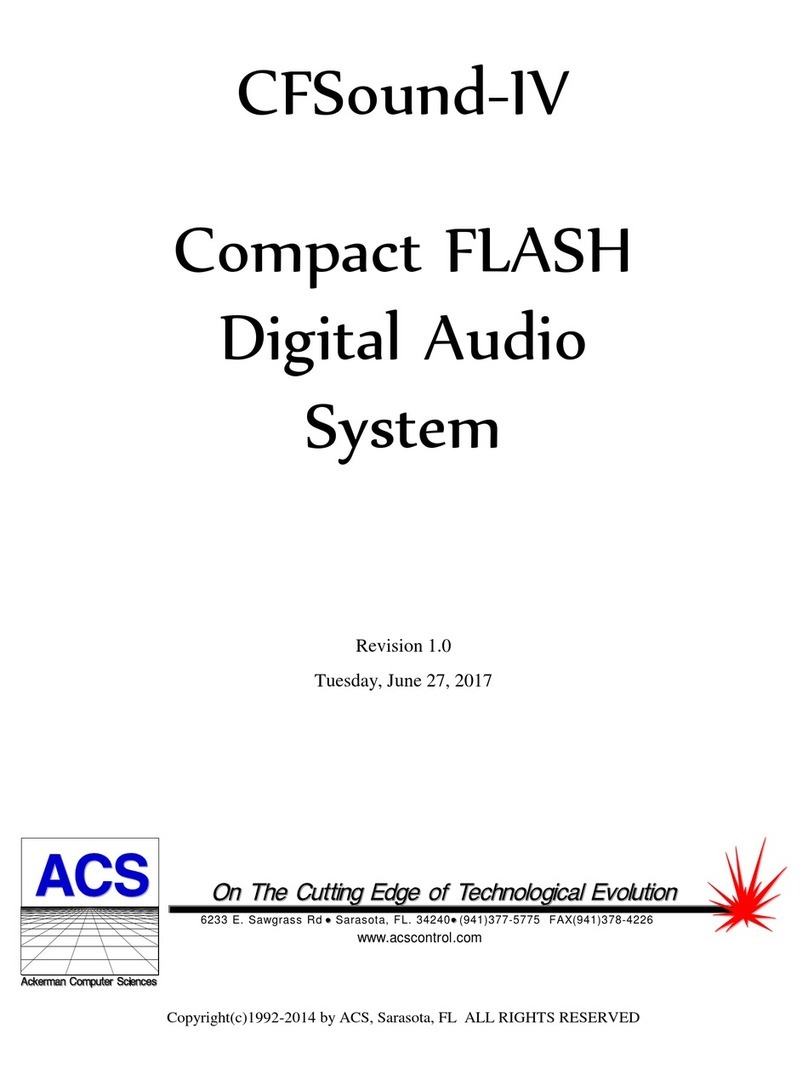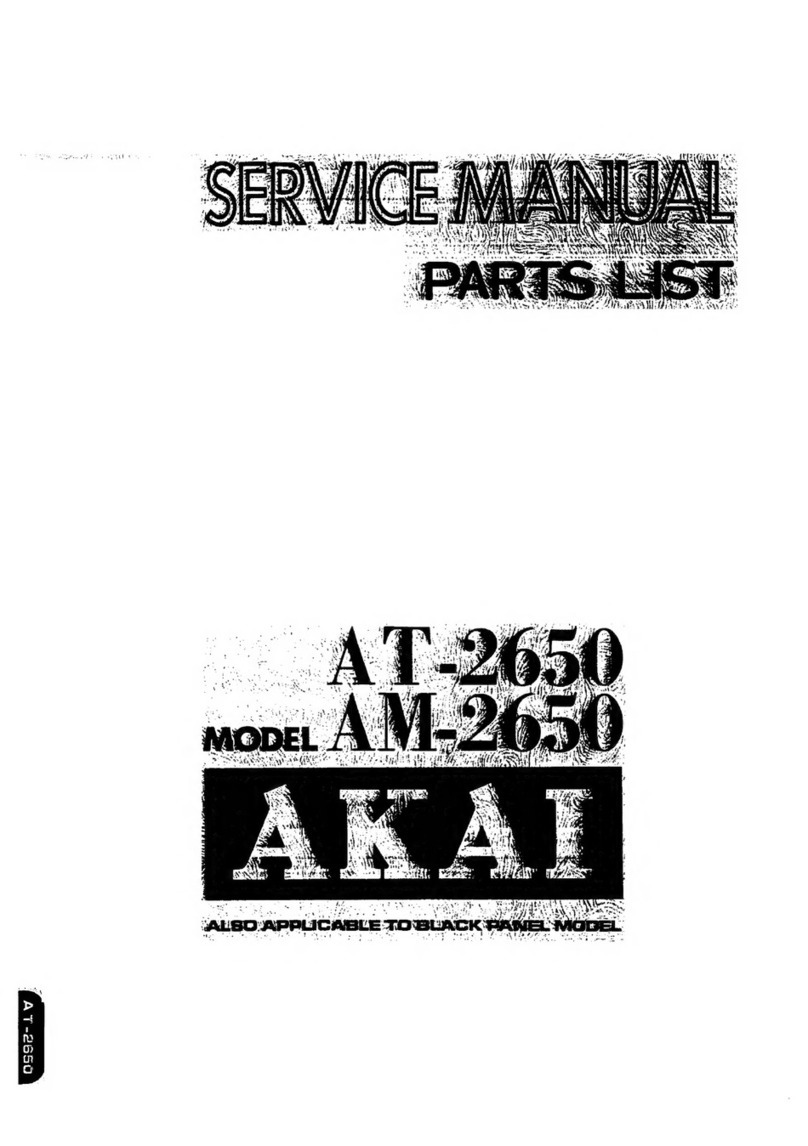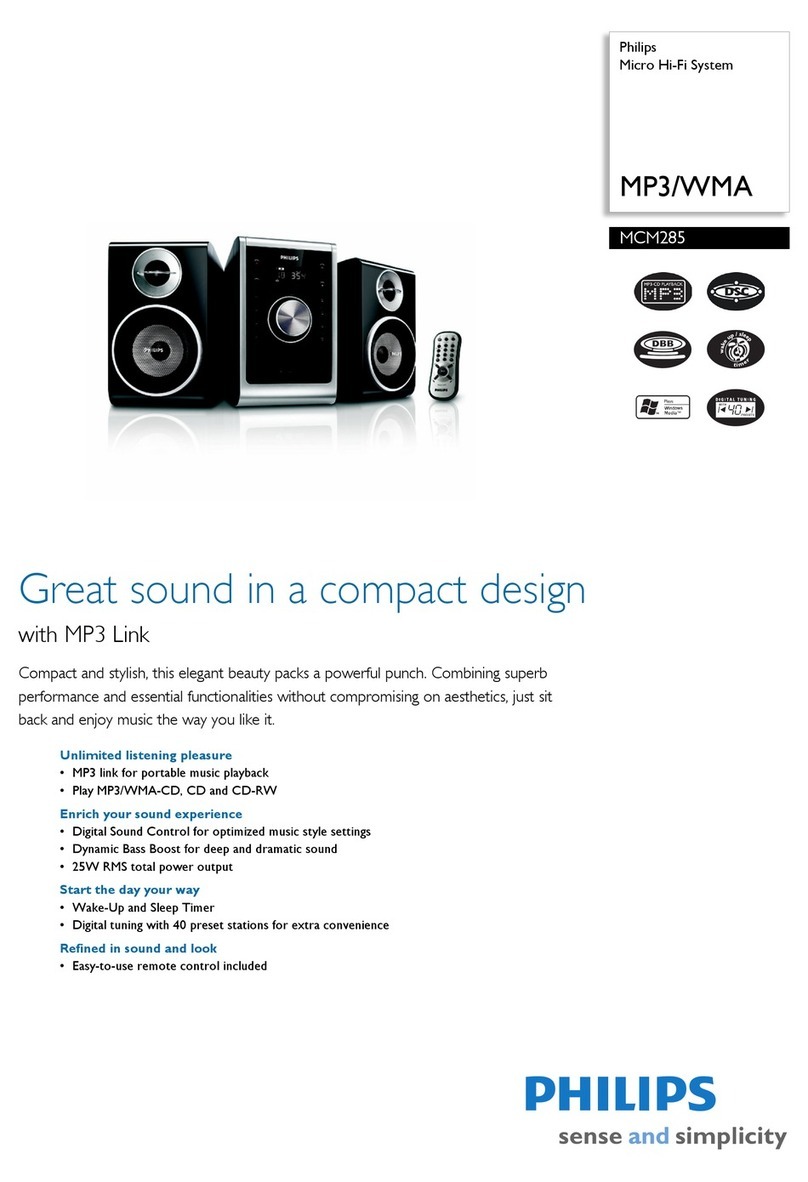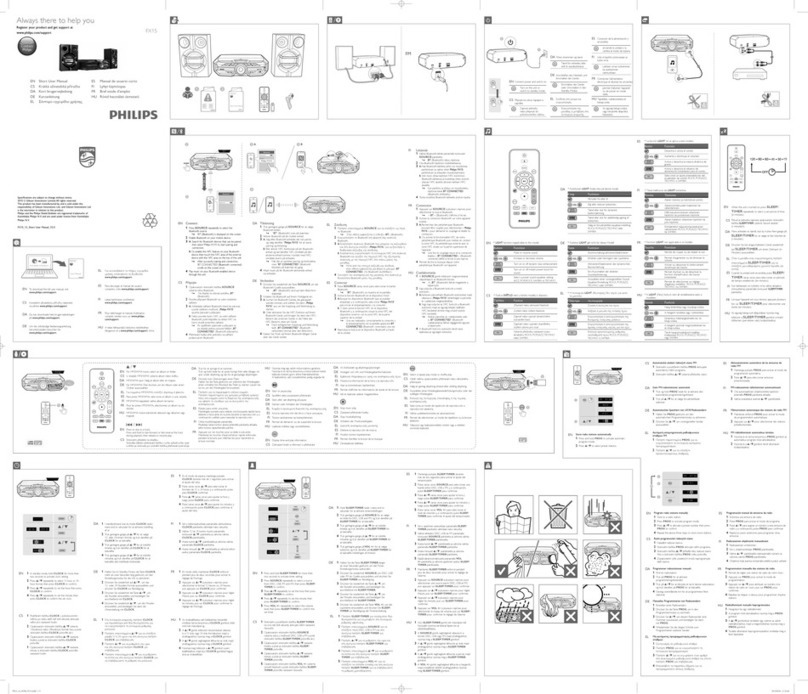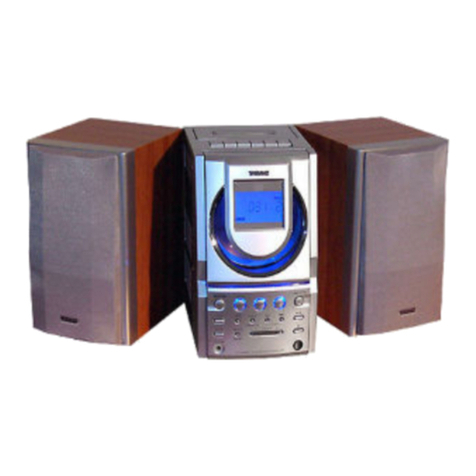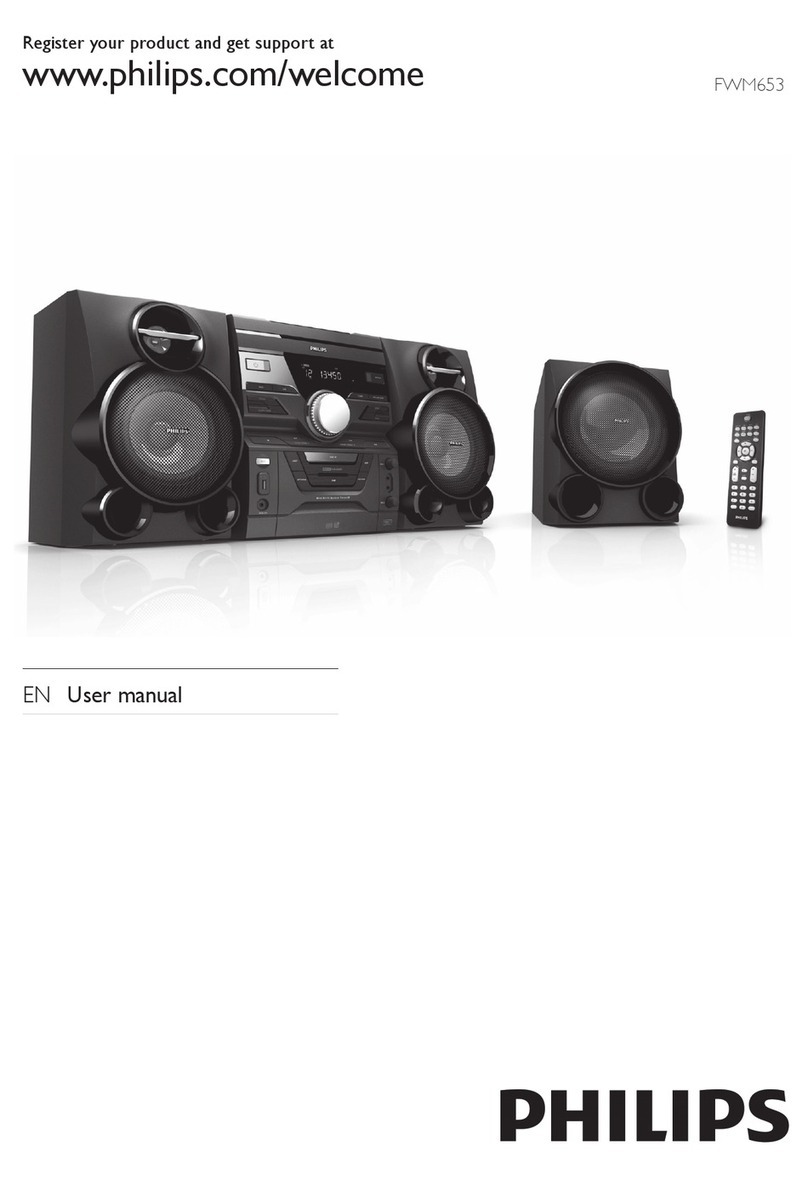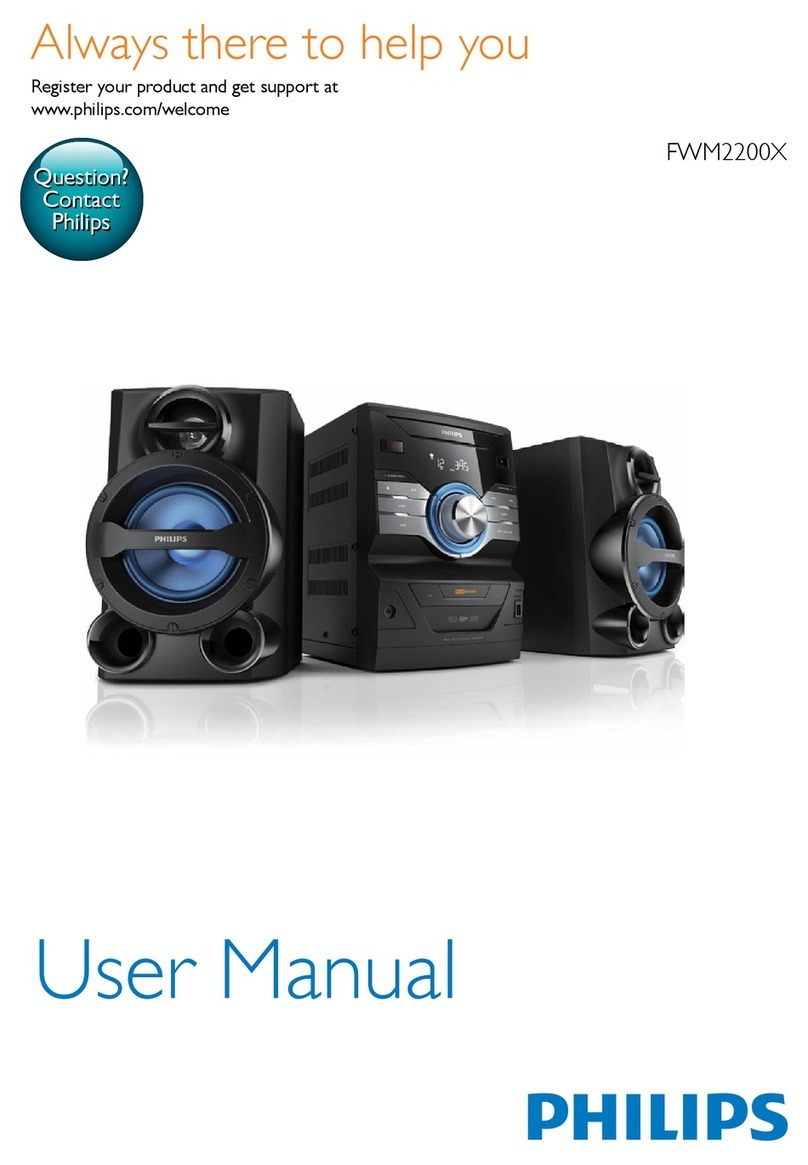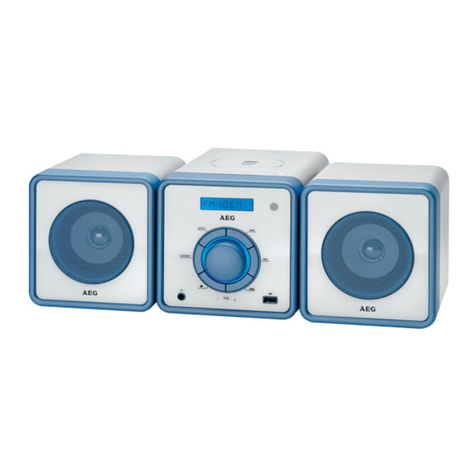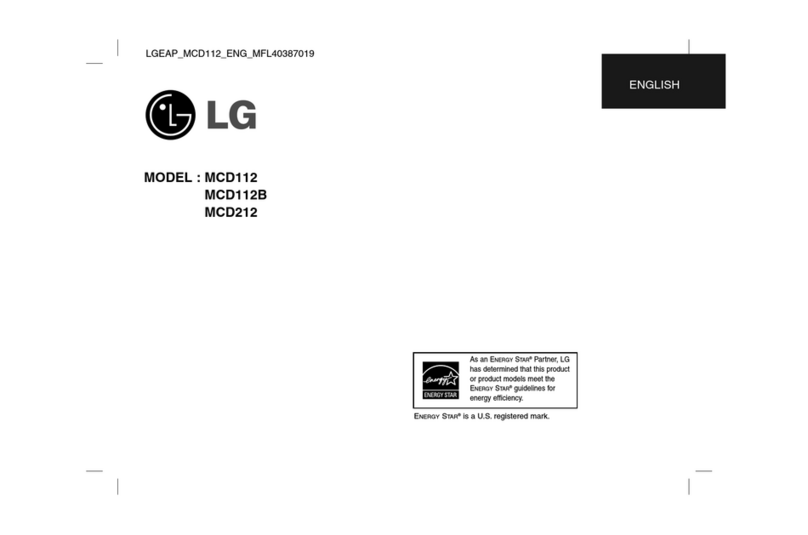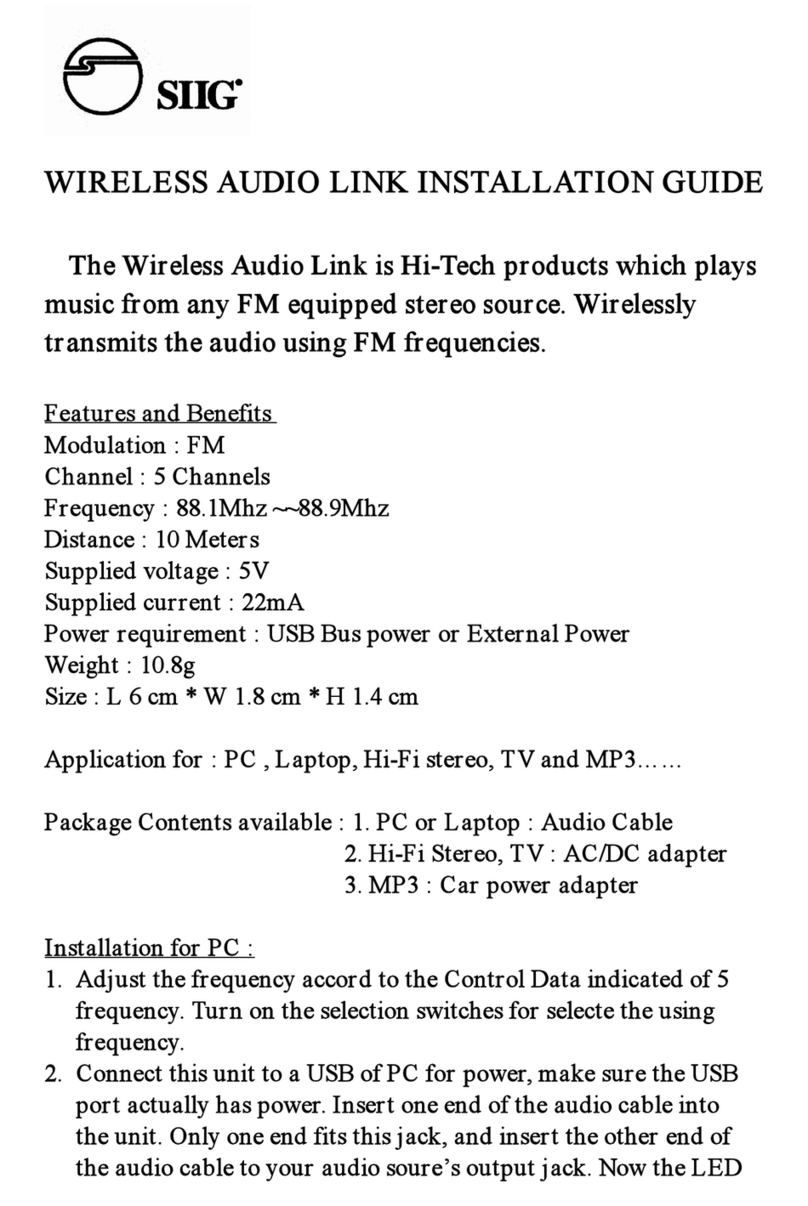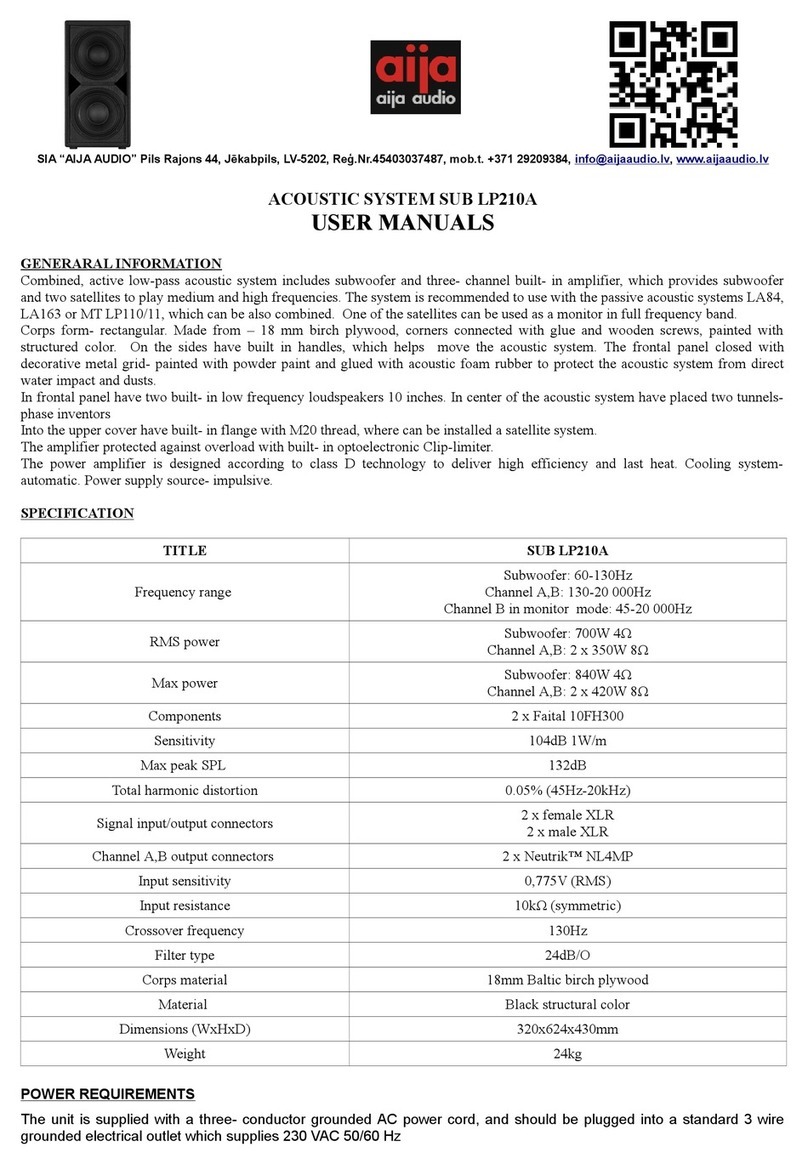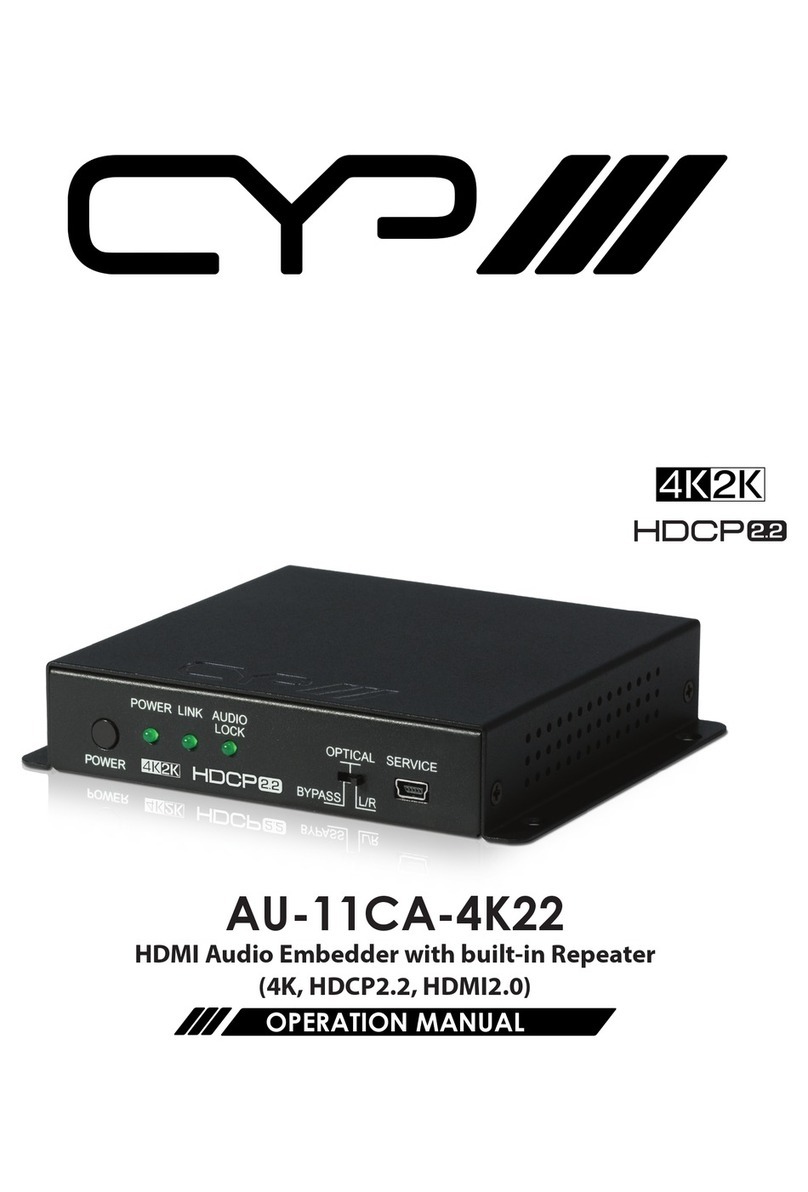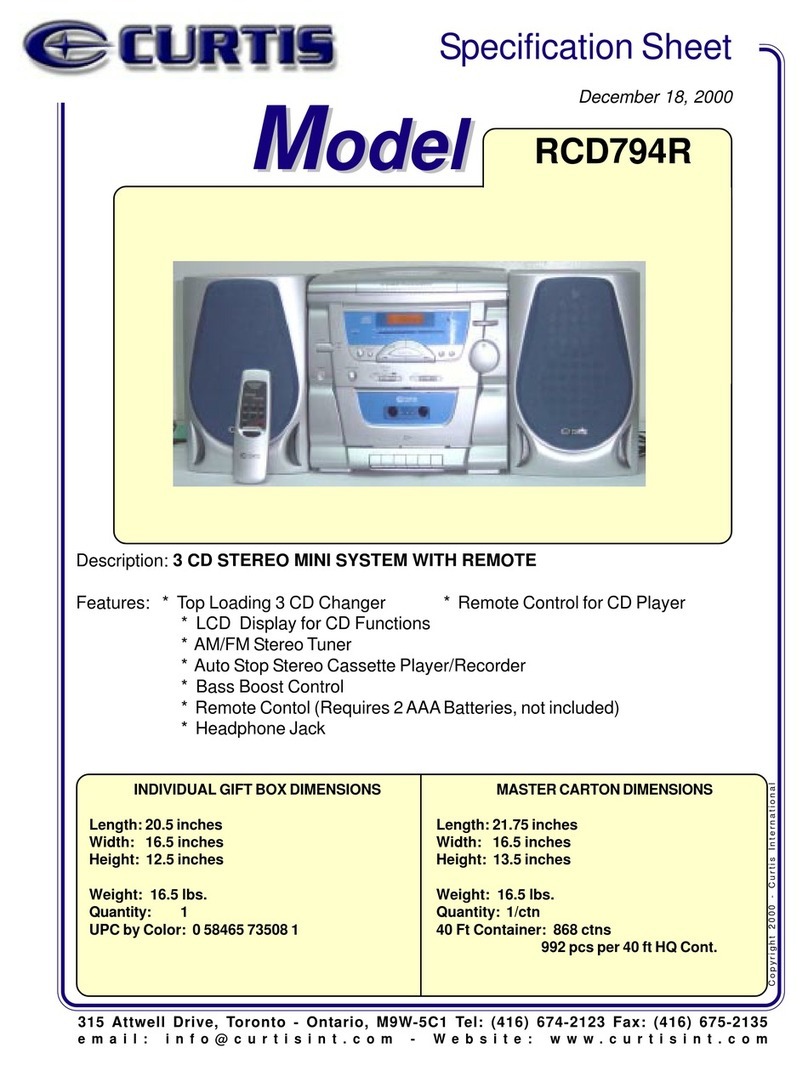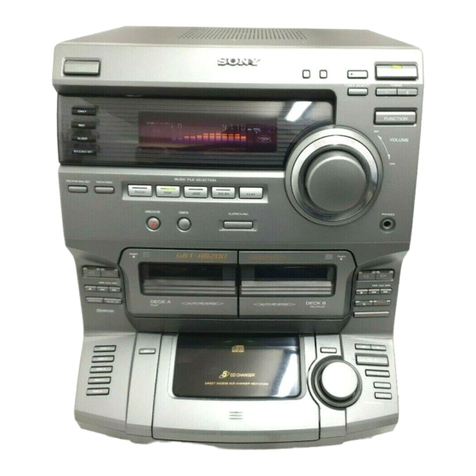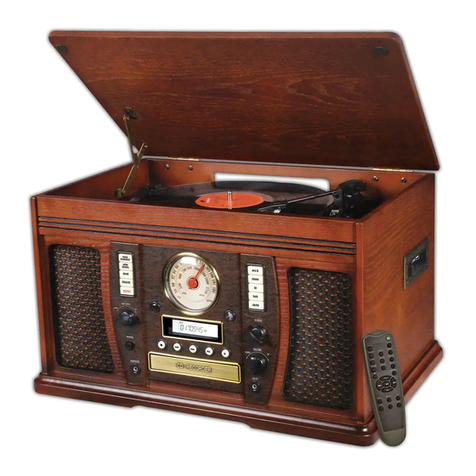ACS Compact FLASH III User manual

Revision 3.13
Thursday, February 08, 2007
6233 E. Sawgrass Rd Sarasota, FL. 34240 (941)377-5775 FAX(941)378-4226
www.acscontrol.com
Copyright(c)1992
-
200
7
by ACS, Sarasota, FL ALL RIGHTS RESERVED

Compact FLASH III Digital Audio System
Copyright©1992
-
2007
by ACS, Sarasota, Florida
2
ALL RIGHTS RESERVED
Table of Contents
Overview
.........................................................................................................................................
4
Features
....................................................................................................................................................
4
Connections
.............................................................................................................................................
5
Main Connector
................................................................................................................................
5
Power Supply Connection
.........................................................................................................
5
Built
-
in Contacts Connection
....................................................................................................
5
Speaker Connection
...................................................................................................................
6
Serial Connector
...............................................................................................................................
6
Remote Volume Connector
..............................................................................................................
7
Line
-
Level Audio Outputs
................................................................................................................
7
Compact Flash Card Re
quirements
.........................................................................................................
8
Programming the Compact FLASH Card
....................................................................................
8
Installing and Removing the Compact FLASH Card
..............................................................................
8
Audio Rates Supported
............................................................................................................................
8
Formatting th
e CF Card
...........................................................................................................................
9
Modes of Operation
.......................................................................................................................
9
CFSound Mode
........................................................................................................................................
9
Filename Formats
.............................................................................................................................
9
Sample Filenames
...................................................................................................................11
Compact FLASH Card
Loading and Scanning
.......................................................................12
Background Audio Tracks
.......................................................................................................12
CFSOUND.INI File
.................................................................................................................12
Quiz / Kiosk Mode
...................................................................................................................15
Sequential Sound Playout
........................................................................................................
17
RS
-
232 Serial Port Protocol
................................................................................................... 18
Basic Mode
............................................................................................................................................19
Diagnostic LED Codes (Red & Green LEDs)
.............................................................................
20
Green LED
.............................................................................................................................................20
Red LED Error Flashes
..........................................................................................................................20
Power Requirements
...................................................................................................................
20
Digital Audio Recording
..............................................................................................................
21
Recommended Recording Procedure
.................................................................................................... 21
Optional Plug
-
in Modules
............................................................................................................
22
CFSound III Contact Sense 8 Module
................................................................................................... 22
CFSound III Contact I/O 8 Module
.......................................................................................................23
CFSound III Contact Sense 24 Module
................................................................................................
.
25
Contact Wiring
......................................................................................................................................26
Frequently Asked Questions
......................................................................................................
27
Sample Messages
........................................................................................................................
31
Sample Power Up Message, no CF card
...............................................................................................31
Sample Power Up Message, CFSound Mode
........................................................................................31
Sa
mple Power Up Message, Basic Mode
..............................................................................................32

Compact FLASH III Digital Audio System
Copyright©1992
-
2007
by ACS, Sarasota, Florida
3
ALL RIGHTS RESERVED
Mechanical
....................................................................................................................................
32
Firmware Revisions
.....................................................................................................................
33
Upgrading the Firmware
.............................................................................................................
34

Compact FLASH III Digital Audio System
Copyright©1992
-
2007
by ACS, Sarasota, Florida
4
ALL RIGHTS RESERVED
Overview
Thank you for purchasing
the
Compact FLASH
III
Digital Audio System; be assured that it will
provide you with thousands of hours of trouble free, solid-state operation. You will also find that it is
simple to change audio themes or tracks and is easy to make your own recordings o
r program the device.
End users can change the audio themes or tracks simply by inserting another, different Compact
FLASH Card, as easily as the changing of a cassette tape. Multiple cards can be programmed with
different audio themes or tracks allowin
g daily, hourly, weekly or monthly changes. It truly is as simple as
removing the old card and plugging in the new one. Depending on the manufacturer, Compact FLASH
Cards may be re
-
used up to 10
0
,000 times.
Sound files are easily copied onto the card via your PC or laptop, using a Compact FLASH to
PCMCIA, Compact FLASH to USB or parallel port adapter.
As
the files are copied to the Compact
FLASH Card, they are renamed. This process instructs the Compact FLASH
III
Digital Audio System
how and when to pla
y the copied files.
Features
The Compact FLASH
III
Digital Audio System incorporates the following features:
Uses inexpensive, industry standard Compact FLASH (CF) Cards up to
4G
in size.
RS
-
232 Serial Port for controlling audio play out via an attached
computer or PLC.
Diagnostic LED s to indicate operating status.
Two b
uilt
-
in contact input
s to activate sounds
.
Push To Talk (PTT) dry
relay contact
output
that can optionally close whenever a sound is played.
Digital Up/Down volume control
push buttons wi
th remote connector.
Built
-
in 20
Watt
Class D
Stereo Amplifier.
Optional board for contact inputs to activate sounds.
Optional board for contact outputs activated with sound for other control.
Scriptable via built
-
in ACS Basic

Compact FLASH III Digital Audio System
Copyright©1992
-
2007
by ACS, Sarasota, Florida
5
ALL RIGHTS RESERVED
Connections
Front View
CF Card Slot
Diagnostic LEDs
Optional Contact
Module
RESET
Button
Rear View
LINE OUT
RCA Jacks
Serial RS-232
DB-9P
Power
PTT Relay
Contacts
SPEAKERS
OUT
RIGHT LEFT
Contacts
25 & 26
Up / Down
Volume Buttons
MAIN
Main Connector
Most of the connections to the CFSound-
II
I are supplied to the unit with a ten pin, 2-piece pluggable
terminal block style connector
at
Main
.
Power Supply Connection
The CFSound III requires a regulated or unregulated voltage of 10V to 18V DC. The unit has
resettable fusing internally to protect the Power input. Should the fuse trip, remove power,
correct the fault,
wait a moment for the fuse to reset, then re-apply power. The non-OEM version of the CFSound III is
supplied with a
wall
mounted transformer rated at 12
VDC @
1.0
A.
ACS supplies two different versions of the wall-mounted transformer power supply for the CFSound-
II
I
. The version in the black enclosure has a white stripe on the positive lead which should be connected to
pin 9 of the
Main
connector with the other lead to pin 10. The version in the beige enclosure has a black
stripe on the negative lead which should be connected to pin 10 of the
Main
connector with the other lead
to pin 9.
Built
-
in Contacts Connection
The
Push
-
To
-
Talk (PTT)
relay dry
contact output on the
Main
connector may be activated whenever a
sound is playing. The contact output is implemented with a relay whose contacts are rated at 1A @ 30VDC
maximum
. The C
ommon and Normally Open relay contacts are a
vailable on the
Main
connector.
The contact inputs on the
Main
connector appear logically to the CFSound-
II
I as Contact #25 & #26,
and may be activated by momentarily applying ground to the Input Contact #xx pin on the
Main
connector.
The contact inputs are implemented with an optocoupler. The Cathodes of the LEDs in the
optocoupler are connected to the Contact #25 and #26 Input pins. The Anodes of the LEDs in the
optocoupler are connected to an internal 12VDC power supply, with a 680 ohm current limiting resistor in
series. The output transistor of the optocouplers have 10K pullup resistors on their collectors, with the

Compact FLASH III Digital Audio System
Copyright©1992
-
2007
by ACS, Sarasota, Florida
6
ALL RIGHTS RESERVED
emitters connected to ground and are buffered by an inverting gate. The following diagram is
representative of the Contact #25 input and is
similar for Contact #26:
Contact #25
GROUND
VEE
+5v
680
ohm
10K
ohm
The input is activated by sinking current from the Contact input pin to ground. A Ground connection is
supplied on pin
10
of the
Main
connector for this purpose. The input current sink requirement is
appr
oximately 15 mA.
Speaker Connection
The speaker terminals on the
Main
connector provide connections for the two external left and right
speakers. These may be either 4 or 8 ohm speakers, with 4 ohms providing higher output power. The
speakers should be capable of handling up to 20 watts. NOTE THAT THE SPEAKER OUTPUTS ARE
NOT REFERENCED TO GROUND
EACH SPEAKER REQUIRES ITS OWN PAIR OF WIRES
,
AND NEITHER WIRE MAY BE CONNECTED TO GROUND
.
GROUND
10V-18VDC
1 2 3 4 5 6 7 8 9
10
PTTContactN.O.
PTTContactCOM
InputContact26
InputContact25
RightSpeaker+
Left Speaker-
LeftSpeaker+
RightSpeaker-
Pin #
Signal
1
Left
Speaker
+
2
Left Speaker
-
3
Right Speaker +
4
Right Speaker
-
5
Input Contact 25
6
Input Contact 26
7
PTT Contact COM
8
PTT Contact N.O.
9
10VDC 18VDC
10
Ground
Serial Connector
A standard RS-232 serial interface is provided on-board via a DB-9 style male connector.
The
CFSound
III
provides diagnostic messages about CF card insertion and removal events and sound contents
over the serial port. Additionally, the playing of sounds may be controlled by messages issued to the
CFSound
III
via the serial port. The format of the serial data is 2400 baud, 8 data bits and 1 stop bit, and
the baud rate may be changed using a configuration file entry or NVM setting. Only three of the nine pins
are used. The configuration of jumper block JB2 on the CFSound
III
controls whether the serial port looks
like a Modem (DCE) or a Terminal (DTE). As shipped, the CFSound
III
is configured to be DCE so that a

Compact FLASH III Digital Audio System
Copyright©1992
-
2007
by ACS, Sarasota, Florida
7
ALL RIGHTS RESERVED
one
-
to
-one cable from a PC serial port may be used. The Windows HyperTerminal accessory may be used
to view the diagnostic messages and
manually issue commands to start/stop/queue sounds
:
Pin #
Signal Name
JB2 = DCE
Signal Name
JB2 = DTE
2
TX (from unit)
RX (to unit)
3
RX (to unit)
TX (from unit)
5
Ground(GND)
Ground(GND)
Remote Volume Connector
The sound volume level is controlled by two pushbuttons on the front of the CFSound-III: one for Up
and one for Down. A momentary button press of the Up button raises the volume level, a button press of
the Down button lowers the volume level. Pressing and holding the button for ¼ second starts
an automatic
volume increase/decrease until the button is released or the maximum/minimum volume is achieved.
The
volume is essentially
db linear in sixty
-
four, 1db increments from 0db
-
66db.The current volume level is
remembered in non-volatile memory on the CFSound-III and is restored to it s last setting upon power-
up.
The Up and Down button inputs are also available on the VOL connector along the front edge of the
printed circuit board. Connecting a momentary button between the input and ground parallels the operation
of the on
-
board volume controls
:
Pin #
Signal
1
DOWN
-
2
GND
3
UP
-
Line-
Level Audio Outputs
The volume controlle
d sound is also available at an audio line level (1V RMS
at 0db
, 47K ohm
) at the
RCA jacks on the rear of the CFSound
-
III.

Compact FLASH III Digital Audio System
Copyright©1992
-
2007
by ACS, Sarasota, Florida
8
ALL RIGHTS RESERVED
Compact Flash Card Requirements
The
Compact FLASH III Digital Audio System was designed to use only Compact FLASH Cards
(CF Cards) that support the True IDE ATA mode at 3.3 volt operation. Tested cards include San Disk,
Kingston, Techworks, Dane-Elec, Memorex and Hitachi. The San Disk card was tested, since they
manufacture 90% of the retail cards on the market. Compact FLASH Cards are available in many local
electronics or camera stores or can be ordered directly from ACS.
LEXAR Media Compact Flash cards are not 100% compatible in True IDE mode and as such
are NOT COMPATIBLE with the Compact Flash III Digital Audio System.
Programming the Compact FLASH Card
The Compact FLASH Card is programmed by inserting it into the PCMCIA slot of a Compact FLASH
to PCMCIA adapter or a Compact FLASH adapter connected to your parallel port. Sound files are copied
to the Compact FLASH Card just as if it were a disk drive. The files used are the standard *.WAV files
typically employed by Windows and DOS audio applications for years.
When a new Compact FLASH Card is first installed into your computer, Windows (95 or later) should
recognize the device and install the software necessary to access the card. After the software installation is
complete, the Compact FLASH Card appears as a disk drive icon under My Computer. You may then use
Windows Explorer to drag and drop the sound files from your computer s hard disk directly to the
Compact FLASH Card icon. It really is just that easy.
Please take care not to use audio tracks that are copyrighted. If you wish to avoid this issue, you will
find that many computer software outlets have CD s with non-copyrighted music and audio sound effects
that you may use without limitation. They are commonly found in the multimedia section. Please be
advised that you as the user are solely responsible for audio that you record and play from the
Compact FLASH
III
Digital Audio System.
Installing and Removing the Compact FLASH Card
Care should be taken when installing or removing the Compact FLASH Card. Please be certain to
insert the card with a straight and level motion. Please do not force the card to insert. Otherwise, some of
the 50 pins in the socket may become damaged and the card and/or Compact FLASH
III
Digital Audio
System
may become unusable.
Before REMOVING the Compact FLASH Card under Windows 95 or later, Microsoft recommends
that you double click on the PCMCIA icon at the bottom of your computer screen. This will bring up the
pc card [PCMCIA] properties window. Click on socket status tab, then select the card you wish to remove
by clicking on it. Finally, click on the stop button. Windows will then tell you that the card socket
services have been stopped.
On the Compact FLASH
III
Digital Audio System this will all happen automatically simply by
removing the card.
Audio Rates Supported
The Compact FLASH
III
Digital Audio System supports
16
-
bit
mono
or
stereo
Windows PCM
format (.WAV) sound files at a sampling rate of
44.1
KHz (
44,100
Hz)
only
.
The
Compact FLASH
III
Digital Audio System reads the sampling rates and formats encoded in the .WAV sound files whenever a
card is first inserted or a sound playout is triggered. The Compact FLASH
III
Digital Audio System will
not play any file that does not meet these requirements. Further, this error condition should be identified
by the red led flashing twice every six seconds.

Compact FLASH III Digital Audio System
Copyright©1992
-
2007
by ACS, Sarasota, Florida
9
ALL RIGHTS RESERVED
Formatting the CF Card
Compact
FLASH cards must only be formatted using the FAT12 (floppy) FAT16 or FAT32 file
system. NTFS file system formats are not supported. The maximum supported partition size is 4G. The
CFSound
-III will attempt to locate a valid, active partition on the formatted card in order to be able to
access the files. CF cards that have been previously used in some digital cameras may not be correctly
formatted, or have valid partitions defined.
By default, Windows XP will format any Compact Flash card of 64MB or more with FAT32 format.
The ACS Compact FLASH III Digital Audio System uses the FAT (FAT16 or FAT32) format and can not
operate with a NTFS formatted card. You must select FAT file system to format your Compact Flash card
in a Windows XP PC.
Modes of Operation
The
CFSound
-
III can operate in one of two different modes:
1.
Conventional CFSound where the sound playout is controlled by the association of contact
numbers and sound filenames.
This is referred to as the
CFSound Mode
.
2.
Scriptable CFSound where the sound playout is controlled by the execution of ACS Basic
programs.
This is referred to as the
Basic Mode
.
Upon power-up, reset or whenever a Compact Flash card is inserted or removed, the unit determine
s
its operating mode as follows:
If a CF card is not present, th
e
unit
runs in Basic Mode by starting the ACS Basic interpreter and
accepting/executing
a subset of
Basic commands that don t require file I/O via the serial port.
If a
CF card is present
,
the unit looks for a file named
CFSOUND.BAS
and, if
found
, starts t
he ACS
Basic interpreter, loading the file and executing the Basic program within
in Basic Mode
.
If a
CF card is present
, and the file
CFSOUND.BAS is not found
,
the
unit
scans the card looking for
sound files that follow the conventional CFSound Mode Filename Format. If at least one correctly named,
valid sound file is found, the
unit
runs in CFSound Mode.
If
no valid sound files named in the conventional
CFSound Mode Filename Format are found, the unit starts the ACS Basic interpreter and accepts/executes
the complete set of Basic commands via the serial port
in Basic Mode
.
These two modes of operation are detailed in the following sections.
CFSound Mode
In CFSound Mode, the operation of the CFSound-III is controlled by the names of the sound files on
the
CF card. Sounds are associated with contacts by the leading numeric portion of the filename, and the
controlling state of the contact is specified by additional trailing non-numeric character attributes. Sounds
may be played when a contact closes, opens, or only while a contact is closed or open. Sounds may be
flagged as non-
interruptible
, or to only play when no other contact controlled sounds are playing. In
addition, a small configuration text file may be placed onto the CF card along with the sound files to
further control how the unit plays sounds.
Filename Formats
The filenames of the individual Sound files on the Compact FLASH Card control how and when the
sounds are played out by the Compact FLASH
III
Digital Audio System. The filenames must start w
ith
the optional input number they are associated with expressed as
a two digit HEX number
.

Compact FLASH III Digital Audio System
Copyright©1992
-
2007
by ACS, Sarasota, Florida
10
ALL RIGHTS RESERVED
The HEX numbering system has a base of 16 as compared to the decimal system which has a base of
ten. A HEX numeric digit is 0 through F, 0 being equal to decimal 0, and F being equal to 15. The first
digit (MSB) of the two digit hex number is multiplied by 16. The second digit (LSB) is added to the
adjusted value derived from the first digit. The number 10 in HEX is thus equal to 16 decimal. The
number 20 in HEX is 32 decimal, 21 in HEX is 33 decimal, and 7F in HEX is 127 decimal. For your
convenience, a decimal to hex conversion table is provided below:
LSB
MSB
0
1
2
3
4
5
6
7
8
9
A
B
C
D
E
F
0 0 1 2 3 4 5 6 7 8 9
10
11
12
13
14
15
1
16
17
18
19
20
21
22
23
24
25
26
27
28
29
30
31
2
32
33
34
35
36
37
38
39
40
41
42
43
44
45
46
47
3
48
49
50
51
52
53
54
55
56
57
58
59
60
61
62
63
4
64
65
66
67
68
69
70
71
72
73
74
75
76
77
78
79
5
80
81
82
83
84
85
86
87
88
89
90
91
92
93
94
95
6
96
97
98
99
100
101
102
103
104
105
106
107
108
109
110
111
7
112
113
114
115
116
117
118
119
120
121
122
123
124
125
126
127
8
128
129
130
131
132
133
134
135
136
137
138
139
140
141
142
143
9
144
145
146
147
148
149
150
151
152
153
154
155
156
157
158
159
A
160
161
162
163
164
165
166
167
168
169
170
171
172
173
174
175
B
176
177
178
179
180
181
182
183
184
185
186
187
188
189
190
191
C
192
193
194
195
196
197
198
199
200
201
202
203
204
205
206
207
D
208
209
210
211
212
213
214
215
216
217
218
219
220
221
222
223
E
224
225
226
227
228
229
230
231
232
233
234
235
236
237
238
239
F
240
241
242
243
244
245
246
247
248
249
250
251
252
253
254
255
For example, a sound file associated with optional contact input #1 would be named 01.WAV, a
sound file for input #10 would be named 0A.WAV, a file for input #16 would be 10.WAV and a file
for input #36 would be 24.WAV . There is no input #0 and so 00.WAV is reserved and should not be
used.
The two digit hex input number must be the first two characte
rs in the filename.
Additional letter tokens are appended to the input # in the filename to determine
when
and
how
the
audio sound is played. The
Compact FLASH
III
Digital Audio System
provides
one
input in its standard
configuration and, by adding an opt
ional board, can be expanded to either
10
or
26
total inputs. The inputs
can be wired to switches or other such devices, either normally opened or normally closed.
You can also connect the RS-232 port of the Compact FLASH
III
Digital Audio System to the RS-
232 port of your computer or PLC to control up to
255
sounds using serial commands.
The filename letter tokens are described as follows:

Compact FLASH III Digital Audio System
Copyright©1992
-
2007
by ACS, Sarasota, Florida
11
ALL RIGHTS RESERVED
If a Cappears
after
the hex number in the filename, the sound file will be played on a closure of the
correspond
ing optional contact input module input or serial command. The sound will start playing when
the associated contact input goes from an open to closed state.
If a Oappears
after
the hex number in the filename, the file is played on a
opening
of the
corr
esponding optional contact input module input or serial command. The sound will start when the
associated contact input goes from a closed to an open state.
If a P
after
the hex number in the filename, the file will play only while the Cor Ostate is true.
If C, it will play while the associated contact input is closed and it will stop playing the sound when the
input is opened. If O, it will play while the associated contact input is open and it will stop playing the
sound when the input is c
losed.
If an Rappears in the filename
after
the hex number, the sound is
repeated,
that is to say that the
same sound file plays over and over. If used in conjunction with the Pcommand, the sound file will
repeat the entire time the Cor Oinput condition is true. If C, the entire time the input is closed, if
O, the entire time the input is open. If triggered without a P, the file will play indefinitely or until
another sound is played.
If an Sis used in the filename, the on-
board
Push To Talk relay and a contact closure corresponding
to the input number on an optional plug
-
in board will be activated when the file is played.
If a Bis used in the filename, the sound is considered to be a
background
sound. Background
sounds play when no other sound is playing, and multiple background sounds are played in the numerical
sequence of the two digit input number, starting with the special file BACKGRND.WAV which is treated
as if it were file 00.WAV. Sounds that are marked as Background m
ay not be marked for contact closure or
open, play while or repeat. Such markings will be ignored.
If an Nis used in the filename, the sound is considered to be a
non
-
interruptible
sound. Sounds that
are marked as non-
interruptible
will play to completion before any other sounds are played. Contact events
that occur while non-
interruptible
sounds are playing are discarded unless the SaveNIContacts entry in the
optional
CFSOUND.INI file [Contacts] section is set to TRUE. Sounds that are marked as non-
inte
rruptible
may not be marked for Repeat or as a Background sound. Such markings will be ignored.
Sample Filenames
01C.WAV
This file would play once, when triggered by optional contact input #1 closing.
02O.WAV
This file would play once, when trigger
ed by optional contact input #2 opening.
04CP.WAV
This file would play once, when triggered by optional contact input #4 closing and
play only while input #4 was closed without repeating.
07CPR.WAV
This file would play and repeat, the entire time o
ptional contact input #7 was closed.
01OPR.WAV
This file would play and repeat, the entire time optional contact input #1 was open.
08CNS.WAV
This file would play once, without being interrupted when triggered by optional
contact input #8 closing. The on-board PTT relay would be activated for the duration
of the sound as well as optional contact output #8.
7EB.WAV
This file would play as a background sound whenever any other sound was not
playing.
7FB.WAV
This file would also play as a background sound after the preceding file 7EB.WAV
had played.
19C.WAV
This file would play once, when triggered by contact input #25 on the PTT connector
on the back of the CFSound
-
III
closing.

Compact FLASH III Digital Audio System
Copyright©1992
-
2007
by ACS, Sarasota, Florida
12
ALL RIGHTS RESERVED
Compact FLASH Card Loading and Scanning
Once programmed with the desired sounds and correct filenames, the card is inserted into the slot on
the front of the Compact FLASH
III
Digital Audio System. The green LED indicator should begin to
flash indicating that the unit is scanning and loading the files from the card. When the card is correctly
loaded and scanned, the green LED should glow steadily. Any problems encountered while reading the CF
card are indicated by a repeating sequence of flashes on the red LED indicator.
The card may be removed at any time. In that c
ase, both the green and red LED indicators should turn
off.
The optional contact inputs are debounced by sampling them using a periodic interrupt. The sample
rate is 50 Hertz (20 milliseconds). Valid input closures are detected by reading a 0 - 0 - 1 (open, open,
closed) sample sequence. Valid input opens are detected by reading a 1 - 1 - 0 (closed, closed, open)
sample sequence.
The status of the unit while loading and scanning is also displayed via messages sent out the serial
port. Using a PC with HyperTerminal or other terminal emulator software connected to the
Compact
FLASH
III
Digital Audio System
serial port the card loading and scanning messages may be viewed. The
serial data format is 2400 baud, 8 data bits and 1 stop bit. Samples of these messages are shown in the
Appendix.
Background Audio Tracks
If a sound file is copied onto the Compact FLASH Card with the name BACKGRND.WAV, this
sound file will play only when no other audio tracks are being played. It will cease playing when the
comma
nd is issued to play another sound file. Once that sound file is finished playing, the
BACKGRND.WAV file will resume play from the point where it was interrupted and continue to play
until again interrupted.
In addition, any files with the Btoken in their filename after the numeric portion will also be played
in numerical sequence as background sounds, following the BACKGRND.WAV file.
CFSOUND.INI File
Support is provided to control various operating parameters by the inclusion of a CFSOUND.INI file
on
the CF card. When a card is inserted and after all sound files have been loaded, the CFSound
III
unit
looks for a file with this name, and reads initialization parameter entries from it. Parameter entries are
organized into sections with a section name in brackets followed by one or more PARAMETER=VALUE
lines. The Section Names and Parameter entries are case sensitive. A section or parameter may be
commented out by placing a # character as the first character on the line.
Here is a list of currently su
pported Sections and Parameter entries:
[Section] / Parameter
Description
[Comm]
Communications Port Section
BaudRate=ddddd
Sets the serial port baudrate to the decimal
value ddddd. Default=2400.
[DEBUG] Debug Section
ShowStartStop=TRUE/FALSE
Enables RS-
232 message display of sound
start/stop events.
Default=FALSE.
[Background]
Background Section
BackgroundDelay=ddddd Sets the delay in seconds between background
sound playouts to the decimal value ddddd.
Default=0.
[Quiz] Quiz Section
QuizMode=TRUE/FALSE
Enables Quiz/Kiosk mode of operation.
Default=FALSE.

Compact FLASH III Digital Audio System
Copyright©1992
-
2007
by ACS, Sarasota, Florida
13
ALL RIGHTS RESERVED
[Section] / Parameter
Description
QuestionContacts=dd Sets the number of question contacts to the
decimal value dd.
Default=4.
AnswerContacts=dd Sets the number of answer contacts to the
decimal value dd.
Default=4.
NoAnswerTimeout=dd
Sets the delay in seconds between the end of the
question sound and the timeout answer sound to
the decimal value dd.
Default=5.
AwaitAnswerSound=xx Sets the hexadecimal sound number xx to play
after the question sound before the timeout
ans
wer sound.
Default=0 (no sound).
AnswerWithoutQuestionSound=xx Sets the hexadecimal sound number xx to play if
an answer contact is activated before a question
contact.
Default=0 (no sound).
[Contacts] Contacts Section
Force=TRUE/FALSE Setting this va
lue to TRUE restores the original
CFSound contact behavior wherein the contact's
active status is 'forced' upon reset, power
-up
or card-
insertion. This will cause associated
sound activation if the contact was active.
Setting this value to FALSE (the defau
lt) causes
the new behavior wherein the contact's current
status is sampled upon reset, power
-up or card-
insertion. This will cause no associated sound
activation until the contact is re
-activated.
Default=FALSE.
SequenceContactNumber=dd Sets the number of the contact that will play
sounds in sequence to the decimal value dd.
Default=0 (no sequencing)
FirstSoundNumber=dd Sets the first sound number that will be played
in sequence to the decimal value dd.
Default=1 (sound #1)
LastSoundNumber=dd
Sets the l
ast sound number that will be played
in sequence to the decimal value dd.
Default=127 (sound #127)
SaveNIContacts=TRUE/FALSE Setting this value to TRUE will remember any
contact events that occur while a non
-
interruptible
sound is playing. Note that this
can cause a non
-interruptible sound to play
again if its contact is re
-
activated while it is
playing. Default=FALSE
OutputContactModulus=dd Setting this value to non
-
zero will cause the
output contacts associated with sounds to repeat
on the modulo value if QuizMode=FALSE
.
Example: OutputContactModulus=4 activates
contact outputs 1 through 4 for sounds 1 through
4, contact outputs 1 through 4 for sounds 5
through 8, etc.
Default=0
RandomSequence=TRUE/FALSE Setting this value to TRUE will cause each
activation of the SequenceContactNumber to play
a random sound from the range FirstSoundNumber
to LastSoundNumber.
Default=FALSE
OffsetContactNumber=dd Sets the number of the contact that will offset
the sounds associated with the other contacts by
ContactOffs
etAmount to the decimal value dd.
Does not affect Sequence or Quiz mode.
Default=0 (no offset)

Compact FLASH III Digital Audio System
Copyright©1992
-
2007
by ACS, Sarasota, Florida
14
ALL RIGHTS RESERVED
[Section] / Parameter
Description
ContactOffsetAmount=dd Sets the value that will be added the the input
contact number when the OffsetContactNumber
input is active, to offset the actual sound
n
umber that will play to the decimal value dd.
Does not affect Sequence or Quiz mode.
Default=0 (no offset amount)
AutoplayEntireSequence=
TRUE/FALSE
Setting AutoplayEntireSequence to TRUE causes
the entire sequence of sounds to be played once
whenever the
SequenceContactNumber activates one
time. Default=FALSE (no autoplay)

Compact FLASH III Digital Audio System
Copyright©1992
-
2007
by ACS, Sarasota, Florida
15
ALL RIGHTS RESERVED
Quiz / Kiosk Mode
The CFSound
III
may be configured to operate in a Quiz or Kiosk mode. This mode is enabled by
including the requisite
[Quiz]
section entries in a CFSOUND.INI file on the card with the
QuizMode=TRUE
parameter.
In Quiz mode, Question contacts trigger the Question sounds, then Answer contacts trigger the
Answer sounds related to the question that was activated. The Question contacts start at contact 1 and are
contigu
ous through the number of
QuestionContacts=dd
parameter. The Question sounds would be
named 01C.WAV, 02C.WAV, , xxC.WAV where xx is the hexadecimal equivalent of the
QuestionContacts=dd
parameter.
The Answer contacts immediately follow the Question contacts and are contiguous through the
number of
AnswerContacts=dd
parameter. Each Answer contact is associated with an array of Answer
sounds, with the offset into the array controlled by the Question contact that was activated. There is also an
additional
timeout Answer sound that will be played if an Answer contact is not activated within the
NoAnswerTimeout=dd
seconds interval.
Due to the maximum number of sounds being limited to
256
including the optional
BACKGRND.WAV sound the following limitation must
be observed:
QuestionContacts x (AnswerContacts + 1) <=
255
The next table shows a sample of Quiz mode sound file names and their contact associations given the
following values for the [Quiz] section parameters:
QuestionContacts=4,
AnswerContacts=4,
Ans
werWithoutQuestionSound=7E
and
AwaitAnswerSound=7F in the CFSOUND.INI file. Notice
how the Answer contacts play different sounds depending upon what Question contact was activated:
Sound Filename Contact # Description
01CS.WAV 1
Question #1 sound
02CS.WAV 2
Question #2 sound
03CS.WAV 3
Question #3 sound
04CS.WAV 4
Question #4 sound
05CS.WAV 5
Question #1 Answer #1 sound
06CS.WAV 6
Question #1 Answer #2 sound
07CS.WAV 7
Question #1 Answer #3 sound
08CS.WAV 8
Question #1 Answer #4 sound
09.WAV - Ques
tion #1 no Answer Timeout sound
0ACS.WAV 5
Question #2 Answer #1 sound
0BCS.WAV 6
Question #2 Answer #2 sound
0CCS.WAV 7
Question #2 Answer #3 sound
0DCS.WAV 8
Question #2 Answer #4 sound
0E.WAV -
Question #2 no Answer Timeout sound
0FCS.WAV 5 Questi
on #3 Answer #1 sound
10CS.WAV 6
Question #3 Answer #2 sound
11CS.WAV 7
Question #3 Answer #3 sound
12CS.WAV 8
Question #3 Answer #4 sound
13.WAV -
Question #3 no Answer Timeout sound
14CS.WAV 5
Question #4 Answer #1 sound
15CS.WAV 6 Question #4 Answer #2 sound
16CS.WAV 7
Question #4 Answer #3 sound
17CS.WAV 8
Question #4 Answer #4 sound
18.WAV -
Question #4 no Answer Timeout sound
7EC.WAV 5,6,7,8
Answer Without Question Sound
7F.WAV -
Awaiting Answer Sound
Note that while these sample files all have the C contact closure token in the filename, the O
contact open token may be used as well. Sound files that are played without a direct contact closure do not
require these tokens.

Compact FLASH III Digital Audio System
Copyright©1992
-
2007
by ACS, Sarasota, Florida
16
ALL RIGHTS RESERVED
There are two additional, optional sounds that may be played in Quiz mode. The
AwaitAnswerSound=xx
parameter, if xx is non-zero, causes sound file xx.WAV to be played after the
question sound while awaiting an Answer contact activation. In the preceding example, this would play
sound file 7F.WAV. The duration of this o
ptional sound or the
NoAnswerTimeout=dd seconds parameter,
whichever is greater, determines the interval before the associated no answer timeout sound file is played.
The
AwaitAnswerSound
should not be marked as non
-
interruptible
.
The
AnswerWithoutQuestion
Sound=xx
parameter if xx is non-zero causes sound file xx.WAV to be
played if an Answer contact is activated before a Question contact to prompt user to select question first. In
the preceding example, this would play sound file 7EC.WAV when any Answer con
tact is activated before
a Question contact.
A Kiosk mode of operation may be obtained by setting the
NoAnswerTimeout=dd
parameter to zero.
This effectively disables the
AwaitAnswerSound
and all of the No Answer Timeout sounds simply
allowing the Question contact to select different sets of Answer contacts sounds such as various languages
or features. After a Question contact is activated, it remains active selecting a given set of Answer contact
sounds until another Question contact is activated.
Contact outputs may also be activated for Question and Answer sounds by using the S token in the
filename. In Quiz mode, Question contact outputs remain active for the duration of the Question/Answer
cycle. In Kiosk mode, the last Question (answer selection) contact output remains active until another
Question input is activated. Note that the Answer contact outputs associated with the Answer contact
inputs are used for each set of answers, independent of which Question contact is activated. Unique
Answer contact outputs may be achieved by constructing a matrix using the Question contact outputs as
Rows and the repeating Answer contact outputs as Columns (or vice versa). This is shown in the following
diagram:
QUESTION 1
QUESTION 2
QUESTION 3
QUESTION 4
ANSWER 1
ANSWER 2
ANSWER 3
ANSWER 4
+V
+V
= INDICATOR
= CONTACT OUTPUT
Matrix Wiring of Question/Answer Contact Outputs
Q1A1
Q1A2
Q1A3
Q1A4
Q2A1
Q2A2
Q2A3
Q2A4
Q3A1
Q3A2
Q3A3
Q3A4
Q4A1
Q4A2
Q4A3
Q4A4
QxAx
Q1
Q2
Q3
Q4
The
BackgroundDelay=ddddd
parameter can be used in conjunction with one or more background
sounds to provide a delay between sounds, so that they can be used as an attention getting attract mode.

Compact FLASH III Digital Audio System
Copyright©1992
-
2007
by ACS, Sarasota, Florida
17
ALL RIGHTS RESERVED
Sequential Sound Playout
The CFSound
III
may be configured to allow a single contact closure (or opening) to play several
sounds in sequence; one each time it is closed (or opened). This mode is enabled by including the requisite
[Contacts]
section entries in a CFSOUND.INI file on the card with the
SequenceContactNumber=dd
parameter set to
a non
-
zero, valid contact number from 1 to 8 (1 to 24 with Contact Sense 24 module)
or 25
and
26
(rear of unit contact inputs)
.
The range of sounds that may be played in sequence may be constrained by the addition of two other
parameter entries in the [
Contacts]
section. The
FirstSoundNumber=dd
parameter controls the starting
sound number of the sequence, and the
LastSoundNumber=dd
parameter controls the ending sound
number in the sequence. Setting the
FirstSoundNumber
parameter to a higher number than t
he
LastSoundNumber
will cause the sounds to be played in reverse sequence, higher number to lower
number. The sequence wraps around to the beginning or end.
For example to play normal sounds on the first 8 contacts, and sequence through 16 different sound
s
for the 25
th
contact, a ca
rd would be prepared with the 24 sound files named 01C.WAV
18
C.WAV. Then
a CFSOUND.INI file would be added to the card with the entries:
[Contacts]
SequenceContactNumber=25
FirstSoundNumber=9
LastSoundNumber=24
The first eight
contacts would each play their associated sound.
Each closure
of contact
25
would play
a sound from 0
9C.WAV
18C.WAV then repeat from 0
9C.WAV
18C.WAV in sequence. To reverse
the order of the sound playout set the
FirstSoundNumber=2
4
and the
LastSoundN
umber=
9.
To cause the entire sequence of sounds to be played once whenever the
SequenceContactNumber
is
activated, set the
AutoplayEntireSequence
parameter to TRUE. For example a museum exhibit needs to
play a sequence of 8 sounds when triggered with each
sound activating a relay output while it is playing. A
CF card would be prepared with the 8 sound files in the sequence named 01CNS.WAV
08CNS.WAV.
Then a CFSOUND.INI file would be added to the card with the entries:
[Contacts]
SequenceContactNumber=25
FirstSoundNumber=1
LastSoundNumber=8
AutoplayEntireSequence=TRUE
Whenever contact
25
is closed, the eight sounds 01CNS.WAV
08CNS.WAV would play in
sequence, each sound activating its output relay. This feature only works for non-random sequences. The
addi
tion of the non-
interruptible
attribute to the file names prevents multiple contact 1 closures from
prematurely advancing the sequence.

Compact FLASH III Digital Audio System
Copyright©1992
-
2007
by ACS, Sarasota, Florida
18
ALL RIGHTS RESERVED
RS
-
232 Serial Port Protocol
Sound play-out may also be controlled via commands received via the serial port. The data format is
2400 baud, 8 data bits and 1 stop bit. Sounds may be started, queued and stopped using a simple ASC
II
protocol:
<SOH> p {+/
-
/&/~/!} XX <ETX>
where:
Up to 128 sounds may be queued. Sounds that are queued are played in succession in the order that
they were queued only when no other sound is playing until the queue is exhausted or flushed. Note that
this can occur at the end of the current background sound file before it repeats. A background or other
sound that is playing may be stopped by issuing a <SOH>p-00<ETX> serial command sequence to allow
queued sounds to be heard. The background sound will be resumed when the queue has emptied.
Sound volume may also be controlled via commands received via the serial port. The volume is
essentially db linear in sixty-four, 1db increments from -
66db
(value of
0)
0db
(value of 63). The
current volume level is remembered in non-volatile memory on the CFSound-III and is restored to it s
last setting upon power-up. Sound volume may be set, increased or decreased using a simple ASCII
protocol:
<SOH> v {=/+/
-
} XX <ETX>
where:
The speaker amplifier may also be muted via commands received via the serial port. Muting does not
affect the current volume setting and is automatically turned off whenever the CFSound is Reset. The
speaker amplifier may be muted / un
-muted using a simple ASCII protocol:
<SOH> a {+/
-
} <ETX>
where:
<SOH> = ASCII
Start of Header character 0116 (Ctrl
-A)
p = ASCII lower case letter p
{+/-} = ASCII plus character + to start a sound, minus
character - to stop a sound
{&/~/!} = ASCII ampersand character & to queue a sound, tilde
character ~ to flush the queued sounds, exclamation
character ! to stop the current playing sound and flush
the queued sounds
XX = ASCII
two digit hexadecimal number XX16 of the sound (01,
02, . . . , 7E, 7F)
<ETX> = ASCII
End of Text character 0316 (Ctrl
-C)
<SOH>
= ASCII Start of Header character 0116 (Ctrl
-A)
v = ASCII lower case letter v
{=} = ASCII equals character = to set the volume to the
absolute value XX
{+/-}
= ASCII plus character
+ to increase the volume by XX,
minus character - to decrease the volume by XX
XX
= ASCII two digit hexadecimal value XX16 of the volume
modification (00, 01, . . . , 3E, 3F) = (0 63)
<ETX>
= ASCII End of Text character 0316 (Ctrl
-C)
<SOH>
= ASCII Start of Header character 0116 (Ctrl
-A)
a = ASCII lower case letter a
{+/-} = ASCII plus character + to un-
mute the speaker
amplifier, minus character - to mute the speaker
amplifier
<ETX>
= ASCII End of Text character 0316 (Ctrl
-C)

Compact FLASH III Digital Audio System
Copyright©1992
-
2007
by ACS, Sarasota, Florida
19
ALL RIGHTS RESERVED
Basic Mode
In Basic Mode, the operation of the CFSound-III is controlled by the interpreted execution of a user
written program that is written in the ACS Basic language.
BASIC
is the acronym for Beginners A
ll
-
purpose
S
ymbolic
I
nstruction
C
ode
a easy to learn programming language developed by Kemeny &
Kurtz
at Dartmouth in 1964. Programs consist of numbered lines with one or more English keywo
rds
describing the operations that the user wants to have performed.
The BASIC interpreter built-in to the CFSound-III implements most of the language elements for
working with integers, strings and files as well as providing access to the CFSound-III hardware features
such as contacts, timers, clock and playing sounds.
The language elements are outlined in the separate
ACS
Basic User s Manual.
Programs may be developed
two different ways:
1.
Interactively using a terminal emulator such as Windows HyperTerminal connected to the
CFSound s serial port. Language elements are keyed-in, developing and debugging programs
that may be saved on the CF card.
2.
Offline using a text editor such as Windows Notepad. The files are then saved onto the CF
card for debugging when
inserted into the CFSound.
Once a program has been developed and tested, it is placed onto the CF card named CFSOUND.BAS
along with any other required files. The CFSound will then load and execute this file upon power-up, reset
or CF card insertion, effec
tively customizing the unit.

Compact FLASH III Digital Audio System
Copyright©1992
-
2007
by ACS, Sarasota, Florida
20
ALL RIGHTS RESERVED
Diagnostic LED Codes (Red & Green LEDs)
Green LED
Flashes
three times
a second while scanning or loading CF Card files.
Steady on when loaded, ready or playing
in CFSound mode
.
Flashes once a second while
running ACS Basic mod
e
Red LED Error Flashes
The Red LED can indicate up to 4 error conditions by flashing 1 to 4
unique
numeric
code
patterns
from
the following table in a continuously repeating sequence. The Red LED flashes at three times a second for
the value of the patte
rn, followed by a half second gap, then the next pattern.
Flash
Count
Error Condition
On
e P
roblem w/ATA interface, non
-
compatible CF card, bad CF card, e
xecution stops.
Tw
o E
rror opening
.WAV
file for that input, incorrect filename, file does not exist.
Three
E
rror when reading file, file c
orrupted, unsupported file type, the s
ound doesn t start or
stops playing.
Four
No valid *.WAV files of a
CFSound Mode Filename
F
ormat found on the CF Card
starting ACS Basic
. This code will continue until a Bas
ic RUN command is issued.
Five
N
o valid FAT
or FAT32
f
ile system found on the CF Card, e
xecution stops.
Six
E
rror seeking
within file
when
starting or
resuming sound, the sound doesn t start or
resume.
Seven
Error initializing CODEC
, e
xecution stops.
Eight
Invalid .WAV file internal structure
, file
is
ignored.
Nine
Unsupported .WAV format (not Windows PCM)
, file
is
ignored.
Ten
Unsupported .WAV sample rate (not 44.1KHz)
, file
is
ignored.
Eleven
Unsupported .WAV sample size (not 16
-
bit)
, file
is
ign
ored.
Twelve
Contact closure without matching sound file
, a
contact c
losure with matching sound file
stops this code from flashing.
Thirteen
Speaker is muted by RS
-
232 command or ACS Basic command.
Power Requirements
The idle current of a CFSound
III
unit with an 8MB Kingston CF card installed is ~170mA @ 12VDC
input.
With a background sound playing at a moderate level, the current consumption averages ~250mA @
12VDC.
Table of contents
Other ACS Stereo System manuals
